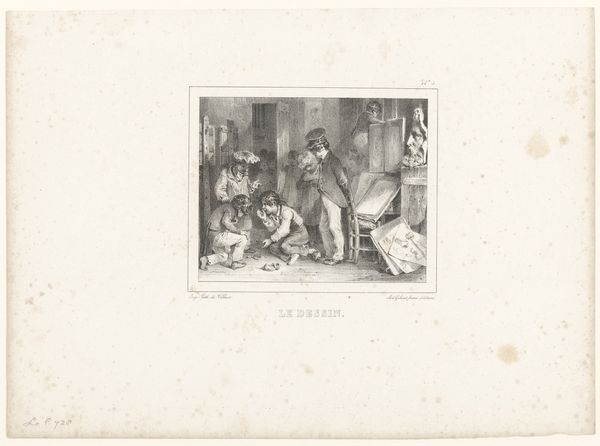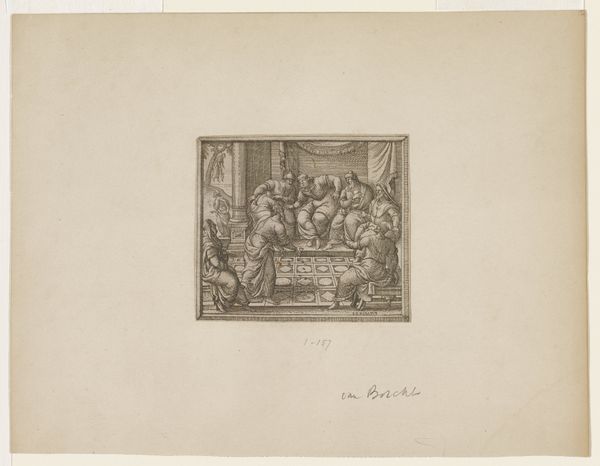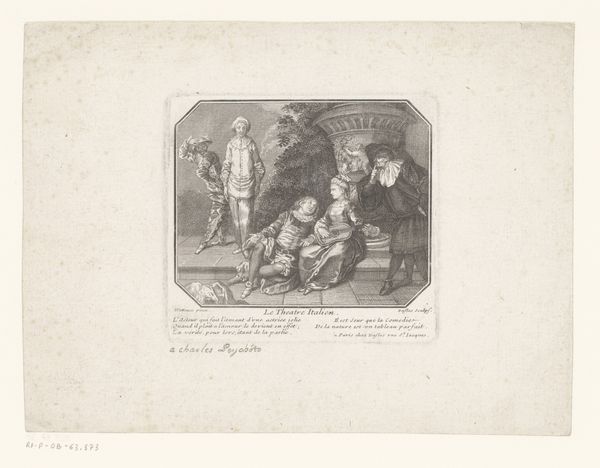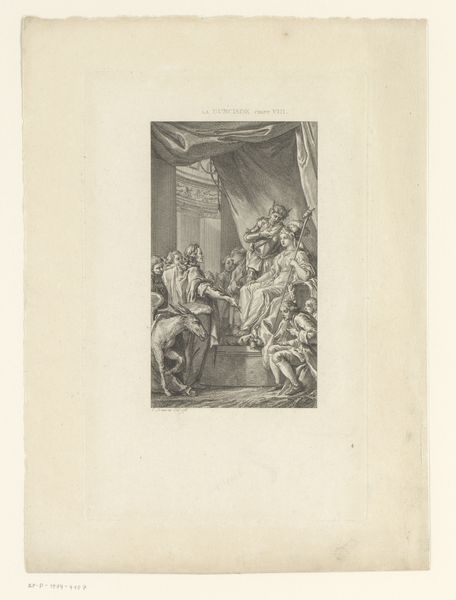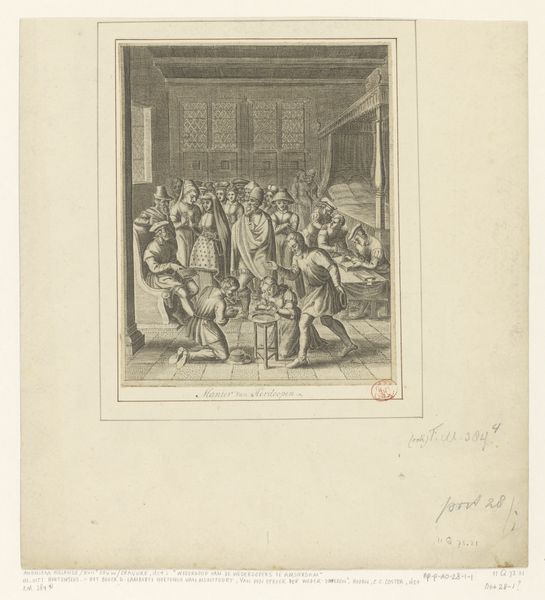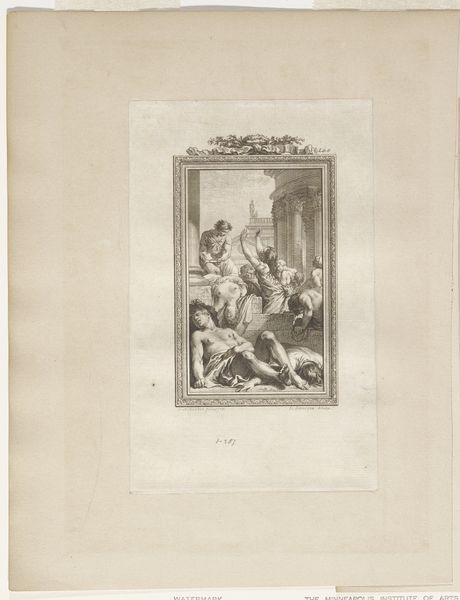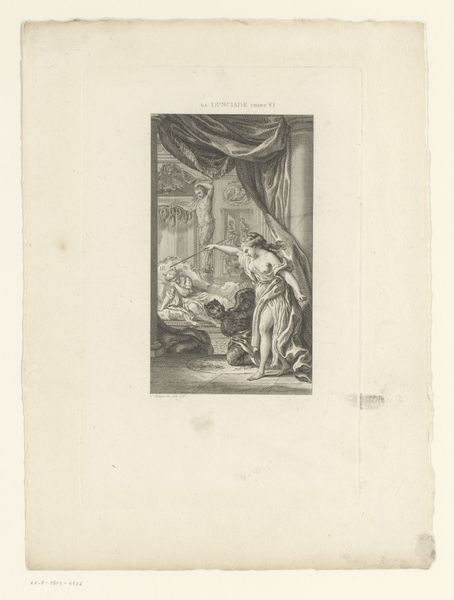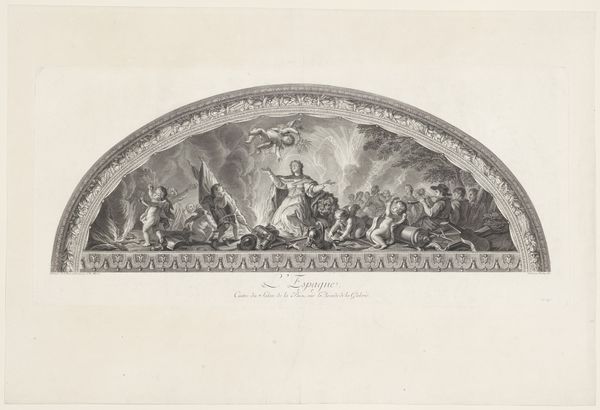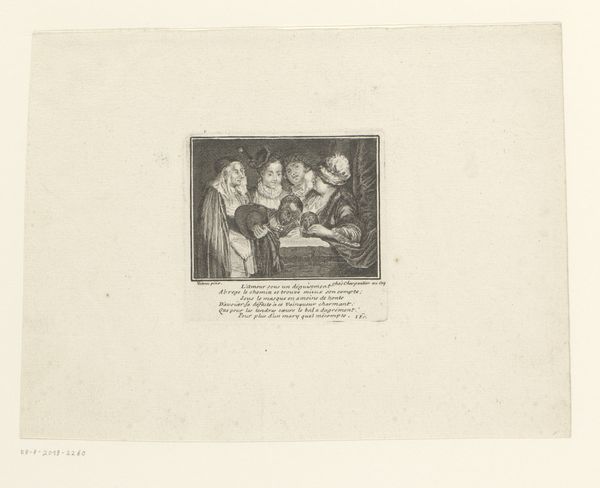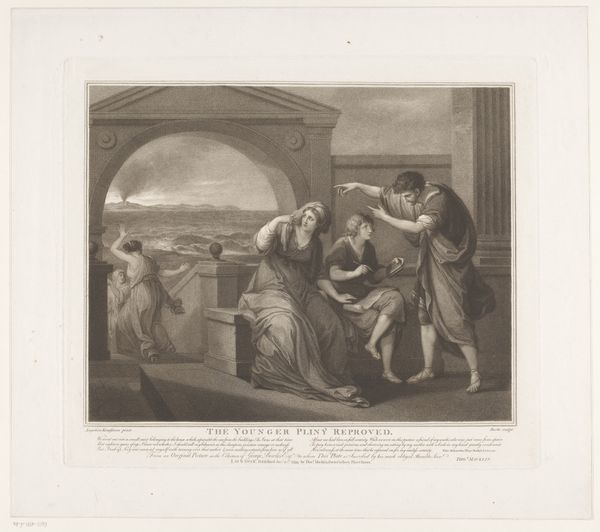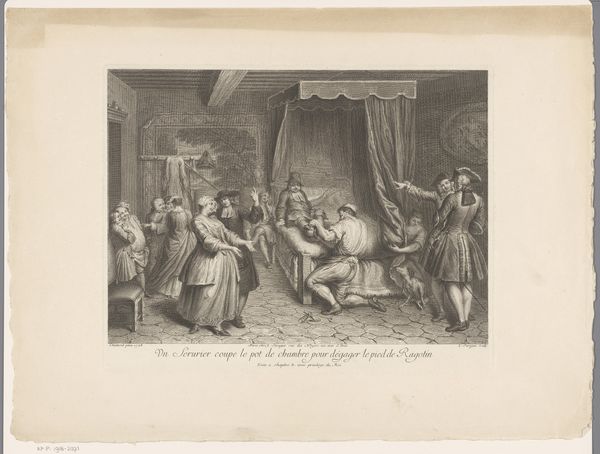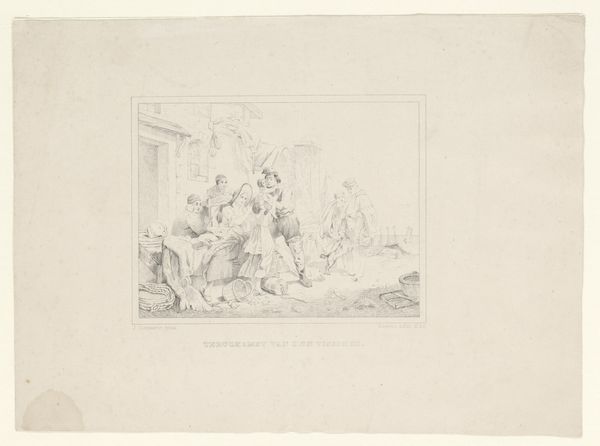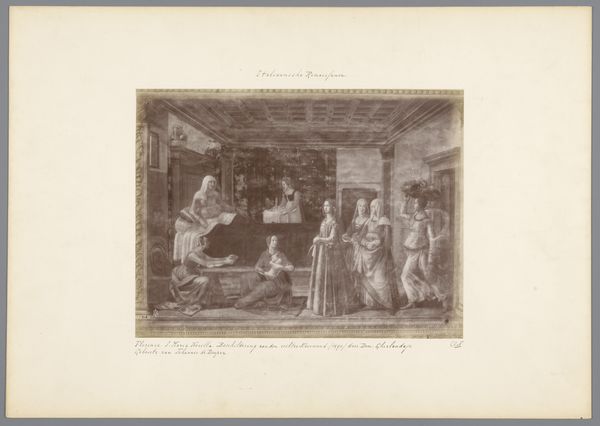
Themistocles Discovers Himself to the Persian King 1790 - 1800
0:00
0:00
drawing, print, ink, engraving
#
drawing
#
neoclacissism
#
narrative-art
#
ink paper printed
# print
#
old engraving style
#
ink
#
history-painting
#
engraving
Dimensions: Sheet: 3 1/4 × 4 3/8 in. (8.3 × 11.1 cm)
Copyright: Public Domain
Edward Francis Burney created this drawing depicting Themistocles before the Persian King, likely around the late 18th or early 19th century. Dominating the scene, the enthroned King, symbolises power and divine right, a motif stretching back to ancient Near Eastern art. Consider the gesture of Themistocles, presenting himself with an outstretched arm. This act of supplication is a recurring theme in art across cultures. We find echoes of it in Roman depictions of conquered leaders submitting to the emperor. Yet, here, it takes on a complex psychological dimension. Themistocles, a celebrated Athenian, humbles himself before a foreign king. The psychoanalytic undertones are rich: a hero brought low, the shifting sands of fortune. This act engages us on a visceral level. The potent symbol of the throne, the supplicant’s gesture, speaks to an enduring human drama – the ebb and flow of power, the surrender and assertion of self. This cyclical progression, constantly resurfacing and evolving, reminds us of the continuous dance between past and present.
Comments
No comments
Be the first to comment and join the conversation on the ultimate creative platform.
